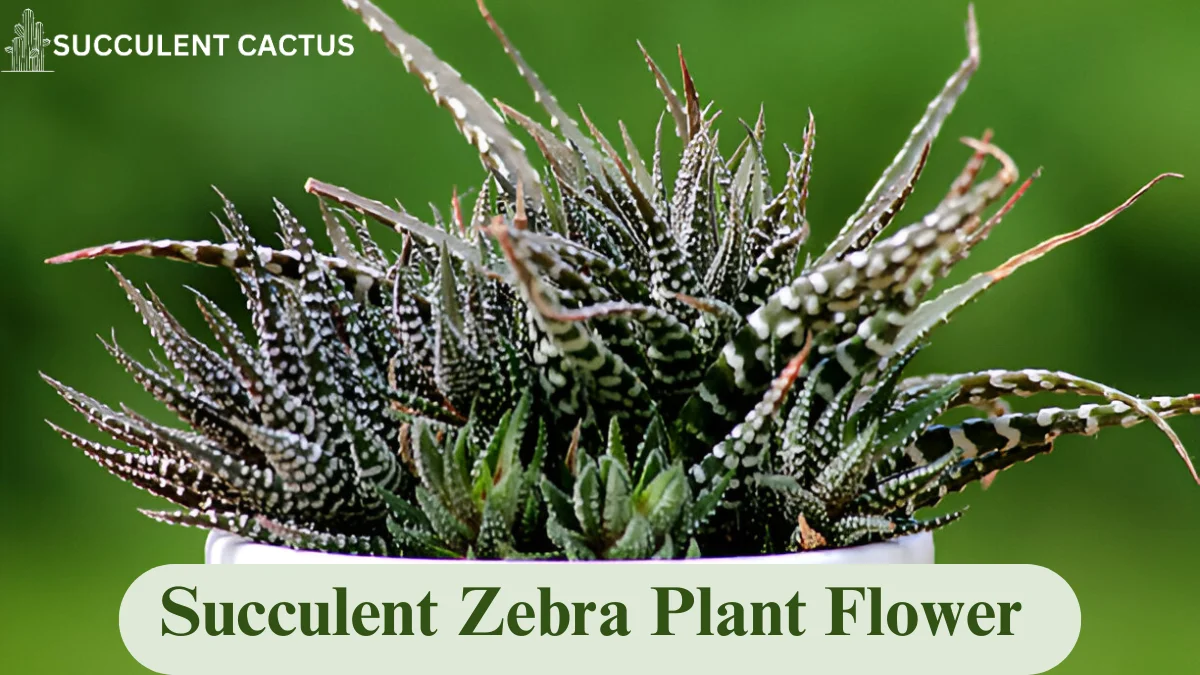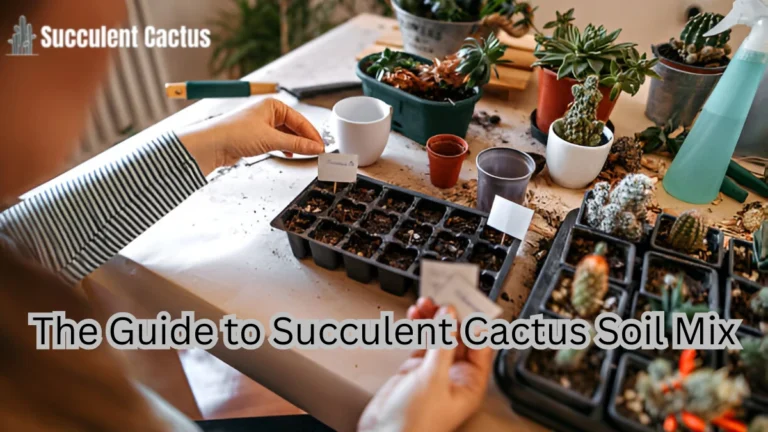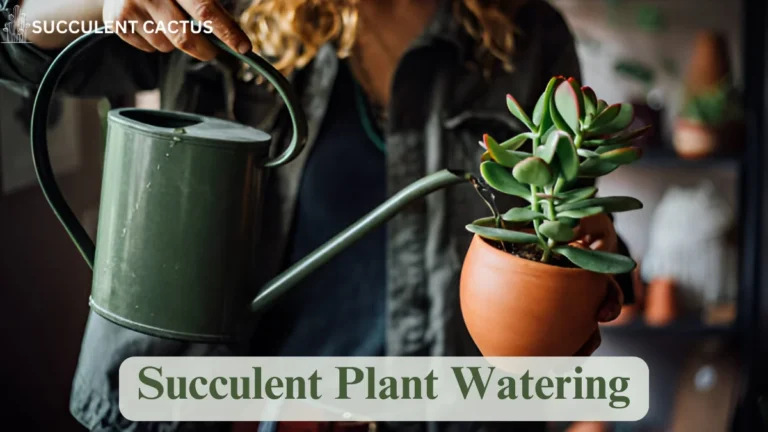The Ultimate Guide to Succulent Zebra Plant Flower and Propagation

The succulent zebra plant flower (Haworthiopsis fasciata or Haworthiopsis attenuata) is a fascinating, low-maintenance plant prized for its striking striped leaves and compact size. It’s a favorite among succulent enthusiasts because of its resilience, adaptability, and unique appearance.
Two key aspects of zebra plant care that intrigue plant lovers are:
- The flowering process of the succulent zebra plant—which is rare but rewarding.
- How to propagate the succulent zebra plant to grow new plants successfully.
This comprehensive guide will provide in-depth knowledge about the succulent zebra plant flower and succulent zebra plant propagation, ensuring that you can cultivate and maintain healthy zebra plants.
Understanding the Succulent Zebra Plant
The succulent zebra plant is often mistaken for aloe due to its similar rosette-shaped structure, but it belongs to the Haworthiopsis genus.
Physical Characteristics of the Zebra Plant
- Leaf Structure: The plant has thick, dark green leaves with raised white stripes on the outer surfaces.
- Size: It remains compact, usually reaching about 6-8 inches tall and wide.
- Growth Pattern: Grows in a dense rosette formation, making it ideal for pots and small spaces.
Natural Habitat and Adaptations
- Native Region: Originates from South Africa, where it thrives in dry, rocky terrain.
- Water Retention: Stores water in its thick leaves, allowing it to withstand drought conditions.
- Sunlight Tolerance: Prefers partial shade rather than intense, direct sun, unlike many other succulents.
Zebra Plant vs. Aloe: Key Differences
Though they look similar, zebra plants and aloe differ in various ways:
| Feature | Zebra Plant (Haworthiopsis) | Aloe (Aloe Vera) |
| Leaf Texture | Thick, rigid, with white stripes | Smooth, with serrated edges |
| Growth Habit | Compact, slow-growing | Larger, spreads quickly |
| Flower Appearance | Small, tubular white flowers on tall stalks | Tubular yellow or orange flowers |
The Succulent Zebra Plant Flower: What to Expect
Many plant owners are curious about the succulent zebra plant flower and whether they can encourage blooming.
Does the Zebra Plant Flower?
Yes! The zebra plant produces small, delicate, tubular white flowers on a thin, elongated stalk. However, indoor plants rarely bloom unless they receive optimal care and conditions.
What Are the Conditions Needed for Flowering?
To encourage flowering, provide:
- Age: The plant must be at least 2-3 years old.
- Light: Needs bright, indirect sunlight for energy.
- Temperature: Thrives in warm conditions, ideally 65-80°F (18-27°C).
- Watering: Slight drought stress can signal the plant to flower.
How Long Do Zebra Plant Flowers Last?
- Flowers last a few weeks before wilting.
- Once dry, the flower stalk should be removed to conserve the plant’s energy.
Encouraging a Succulent Zebra Plant to Flower
Many zebra plants never bloom indoors, but the right conditions can increase the chances.
Providing Optimal Light Conditions
- Place the plant in bright, indirect sunlight for at least 6 hours daily.
- Avoid direct afternoon sun, which may scorch the leaves.
- If natural light is insufficient, consider using grow lights.
Using Proper Watering Techniques
- Follow the soak-and-dry method:
- Water deeply, allowing excess water to drain.
- Let the soil completely dry before the next watering.
- Reduce watering in winter, mimicking the plant’s natural dormancy cycle.
Applying the Right Fertilizer
- Use a low-nitrogen succulent fertilizer (5-10-10) to encourage blooming.
- Apply fertilizer every 2-3 months during the growing season.
How to Propagate a Succulent Zebra Plant
Succulent zebra plant propagation is straightforward and can be done in three primary ways: offset division, leaf cuttings, or seeds.
Propagation by Offsets (Pups)
- Zebra plants naturally produce small baby plants (offsets) at the base.
- This is the fastest and most effective propagation method.
Propagation by Leaf Cuttings
- Cut a healthy, mature leaf and let it dry for 2-3 days before planting.
- This method is less successful than offsets but still possible.
Propagation by Seeds
- This is the slowest method, often taking 6-12 months for growth.
- Best suited for large-scale propagation.
Step-by-Step Guide to Propagating a Zebra Plant
Step 1: Choosing the Right Offset
- Select a healthy, mature offset that is at least 1 inch tall.
- Use clean, sharp scissors to remove it.
Step 2: Preparing the Offset
- Let the cut area dry for 1-2 days to prevent rot.
- Place the offset in dry, well-draining soil.
Step 3: Caring for New Plants
- Water lightly once roots develop.
- Provide bright, indirect sunlight.
Best Soil for Zebra Plant Propagation
Soil quality significantly affects the success rate of propagation.
What Kind of Soil Do Zebra Plants Need?
- The ideal soil must be fast-draining and airy.
- Use a cactus or succulent mix with added perlite or sand.
Soil Composition for Healthy Growth
| Component | Purpose |
| Potting Soil | Provides essential nutrients |
| Perlite | Improves aeration and drainage |
| Sand | Enhances drainage to prevent rot |
Signs of Poor Soil Choice
- Yellowing leaves = Poor drainage or overwatering.
- Soft, mushy base = Root rot due to heavy soil.
Light Requirements for a Healthy Zebra Plant
Light plays a crucial role in the growth, flowering, and propagation of the succulent zebra plant. Providing the right amount of light ensures vibrant leaves and faster propagation success.
Best Light Conditions for Zebra Plants
- Zebra plants thrive in bright, indirect sunlight.
- Direct sun can cause sunburn, browning, or drying of leaves.
- If grown indoors, place them near a bright window with filtered light.
Recommended Placement Indoors
| Location | Light Level | Effect on Plant |
| Near an East or North-facing window | Bright, indirect | Ideal growth conditions |
| Direct afternoon sun (South-facing window) | Too intense | Can cause leaf burn |
| Low light (Far from windows) | Too little | Slower growth, no flowering |
Artificial Light for Zebra Plants
- If natural light is limited, use LED grow lights.
- Place the plant 12-18 inches away from the light source.
- Provide 12-14 hours of artificial light per day for optimal results.
Watering Techniques for Succulent Zebra Plants
Watering is one of the most critical aspects of zebra plant care. Overwatering is the leading cause of root rot, while underwatering can slow growth.
How Often Should You Water a Zebra Plant?
- Use the soak-and-dry method:
- Water deeply until excess drains out.
- Allow soil to completely dry before the next watering.
- In summer, water once every 7-10 days.
- In winter, reduce watering to once every 3-4 weeks.
Signs of Overwatering vs. Underwatering
| Condition | Symptoms | Solution |
| Overwatering | Yellow, mushy leaves, root rot | Let soil dry, trim rotting roots |
| Underwatering | Wrinkled, shriveled leaves | Increase watering gradually |
Best Watering Practices
- Use a pot with drainage holes to prevent water buildup.
- Avoid misting—zebra plants don’t need high humidity.
- Water at soil level, not directly on the leaves.
Common Mistakes in Succulent Zebra Plant Propagation
Even though propagating zebra plants is fairly easy, common mistakes can reduce success rates.
1. Not Allowing Offsets to Callous
- Freshly cut offsets should be left to dry for 1-2 days before planting.
- Planting immediately can cause rot due to excess moisture.
2. Using the Wrong Soil Type
- Avoid heavy, moisture-retaining soil (e.g., regular potting soil).
- Instead, use well-draining cactus mix with sand or perlite.
3. Overwatering Young Offsets
- Newly propagated plants need less frequent watering.
- Water lightly once every 10-14 days until roots establish.
How to Increase Propagation Success
| Factor | Ideal Condition |
| Offset Size | At least 1 inch tall |
| Soil Type | Well-draining, sandy |
| Watering | Every 10-14 days |
| Temperature | 65-80°F (18-27°C) |
Growth Timeline of a Propagated Zebra Plant
After propagation, new zebra plants grow slowly but steadily. Here’s what to expect.
Week 1-2: Root Development
- Offsets begin forming tiny roots.
- Keep the soil slightly moist but not wet.
Week 3-6: First Leaf Growth
- New leaves start emerging from the center.
- Plants need bright light for strong leaf formation.
Month 3-6: Maturing Stage
- Plants establish a strong root system.
- Watering can follow the regular soak-and-dry method.
Growth Timeline Overview
| Stage | Timeframe | Key Development |
| Root Formation | 1-2 weeks | Tiny roots appear |
| Leaf Sprouting | 3-6 weeks | First new leaves form |
| Growth Acceleration | 3-6 months | Root system strengthens |
| Full Maturity | 1+ year | Fully developed plant |
Repotting and Long-Term Care
Repotting is essential for healthy growth and preventing root binding.
When to Repot a Zebra Plant?
- Every 2-3 years, or if roots outgrow the pot.
- If water drains too quickly, indicating compacted soil.
Step-by-Step Repotting Process
- Choose a Pot
- Select a pot 1-2 inches larger than the current one.
- Ensure good drainage holes.
- Prepare the Soil
- Use a well-draining succulent mix with perlite.
- Remove and Inspect the Plant
- Gently remove the zebra plant.
- Trim any rotting or overcrowded roots.
- Replant and Water Lightly
- Place the plant in fresh soil.
- Water after one week to avoid shock.
Long-Term Care Tips
- Keep the plant in indirect sunlight.
- Follow the correct watering schedule.
- Fertilize twice a year for better growth.
Common Pests and Diseases Affecting Zebra Plants
Even though zebra plants are hardy, they can be affected by pests and diseases.
Common Pests
| Pest | Signs of Infestation | Treatment |
| Mealybugs | White, cotton-like spots | Wipe with alcohol-soaked cotton |
| Spider Mites | Webbing on leaves | Spray with neem oil |
| Aphids | Tiny green bugs | Use insecticidal soap |
Common Diseases
- Root Rot
- Caused by overwatering.
- Solution: Let soil dry completely before watering.
- Leaf Yellowing
- Can result from too much water or too little light.
- Solution: Adjust watering and increase sunlight.
- Fungal Infections
- Often caused by excess moisture.
- Solution: Use a fungicide and improve airflow.
FAQs
1. Why isn’t my zebra plant flowering? Zebra plants need bright light, age, and mild drought stress to bloom. Indoor plants often don’t flower.
2. Can I propagate a zebra plant in water? No, zebra plants don’t propagate well in water. Use soil propagation for better success.
3. How long does it take for a propagated zebra plant to grow? It takes 3-6 months for noticeable growth and 1 year to reach full maturity.
4. Why are my zebra plant’s leaves turning brown? Possible causes include sunburn, overwatering, or dehydration. Adjust care accordingly.
5. How do I save a zebra plant with root rot? Remove rotten roots, let the plant dry, and repot in fresh, well-draining soil.
Conclusion
The succulent zebra plant flower is an eye-catching, low-maintenance plant perfect for beginners. By understanding its flowering process and proper propagation methods, you can expand your collection and keep your zebra plants thriving. Follow proper watering, light, and soil care, and you’ll enjoy a healthy plant for years.






